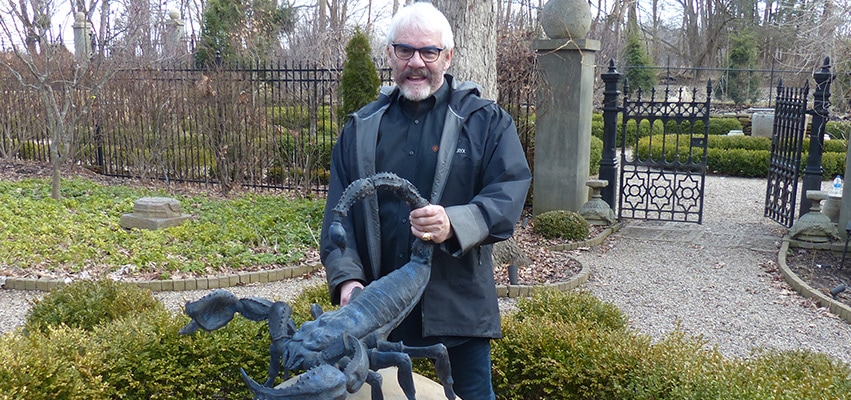At age 75, artist Lonnie Stewart is emphatic about one thing.
OK, maybe many things, but on this in particular: “Artists don’t retire,” he said recently at his rural Washington studio, surrounded by an approving gallery of his clay subjects. “We don’t get out on the golf course.”
It has been a year of interruption – some health issues including COVID, a fall and fractured vertebra – and reflection for Stewart, not that he has the luxury of spending too much time on the latter.
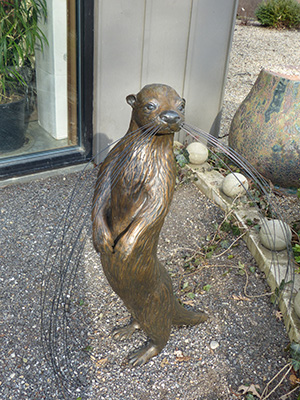
“Sometimes I think, wouldn’t it be nice to take a month off and read and sketch?” he says. Alas, “I’m so worried I won’t get to do everything I want to do in art.”
Case in point is the dream he’s been pursuing for more than two decades, populating the Illinois River from top to bottom, from Chicago to St. Louis, with a series of towering monuments of the French explorers who settled Illinois and the Native Americans who were here first.
For Stewart it would be the capstone on an illustrious career that has counted the likes of Mother Teresa, Lady Diana and Pope John Paul II among those he’s met and counted as subjects of his work.
“I’m going to finish the whole series” of models, 13 in all – from Henri de Tonti, who was so instrumental in putting what would become Peoria on the map, to LaSalle and Jolliet, from the Ottawa chief – Pontiac – to the Iroquois warriors who bounced between cooperation and conflict with the European traders and trespassers.
“So many people don’t know the history of all these French explorers. They’ve lived with the names all their lives but they don’t know who they were,” Stewart said. “I love what I’m doing with this,” even if “someone else has to pick up the ball” to see it to completion. “It’s been a real adventure.”
Stewart has traveled the world – he was leaving for Charleston, S.C. the day after this conversation, a city that has long inspired him, and he spoke of Egypt being in his travel plans – but he remains fascinated by the Illinois River, how its valley was carved by a freakish act of nature known as the Kankakee Torrent, how its history is as riveting as anything a playwright could dream up.
And why shouldn’t he?
Stewart is a son of central Illinois – he grew up in tiny Delong, just outside Galesburg – and while he has left to pursue his ambitions, he always returns.
The Art Institute of Chicago lured him away, then New York where he fed his passion for fashion design, then Europe. While in London he developed a reputation as a portrait artist of surpassing talent. It wasn’t until a car accident laid him up that “I picked up some clay. I thought, ‘I love this.’”
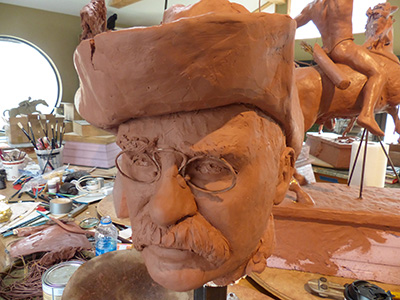
Though not schooled in sculpture, it came naturally to him, and he discovered something else he hadn’t known about himself.
“I’m ambidextrous with 3-dimensional art,” said Stewart. “I can’t write or paint with my left hand but I can with sculpture.”
He also learned that he didn’t have to stray far from home for clients to find him.
Indeed, the commissions keep coming. Stewart is finishing up a statue of Teddy Roosevelt from the latter’s Rough Rider days, at the request of entrepreneur and philanthropist Kim Blickenstaff, compelled by the 26th president’s connection to the Village of Peoria Heights. He’ll be into the casting and mold-making later this spring and expects to be completely finished by this fall.
Stewart approaches every assignment the same way.
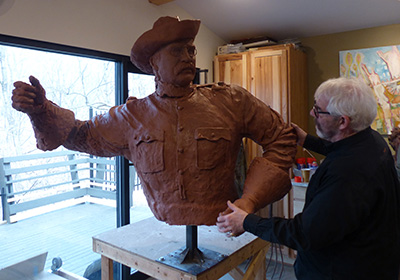
“I throw myself into research. I try to go to the source. I try to really understand the roots of what I’m doing.” For Roosevelt that meant traveling to his summer home in Oyster Bay, New York, in an attempt to get to the essence of who Roosevelt was.
No detail is too insignificant. Stewart will fuss over the tilt of a hat. He’ll work endlessly to get the eyes just right. He’ll pour over photos until he has a sense not only of the bone structure but what makes that person tick.
He works when the muse strikes him. “I’ll wake up at 2 in the morning and work until 1 in the afternoon,” said Stewart.
Initially, he denies that he has a favorite piece – “I don’t know, every one of them is a different journey” – but then confesses that famed journalist and poet Carl Sandburg was a “labor of love.” Maybe it was the shared Galesburg connection. Maybe it was Sandburg’s affection for animals – specifically his goats – not unlike Stewart’s own interest in wildlife.
Then he remembers his piece on Reuben Soderstrom, a Streator resident who was one of the foremost labor leaders of the 20th century, a man called upon by American presidents, and the grandfather of Peoria dermatologist Dr. Carl Soderstrom, Jr. He and Sandberg may have been poles apart politically, but they came from similar backgrounds, and they were both “in Chicago fighting for the same cause … for the underdog, abolishing child labor laws.”
For Stewart, that personal connection matters. It helps fuel the innovation. And then he moves on.
“When I’m finished, I’m finished … When I close a door, I never look back. I never dwell on the past. I try not to anticipate the future, either. I think if you live in the present, you’re happy.”
Lonnie Stewart is busy. He’s happy. And he’s not retiring.
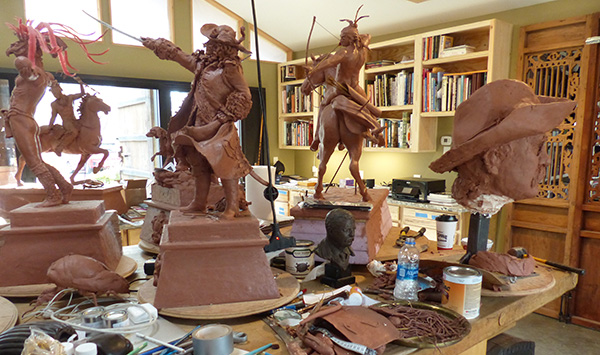

Mike Bailey is editor in
chief of Peoria Magazine.


